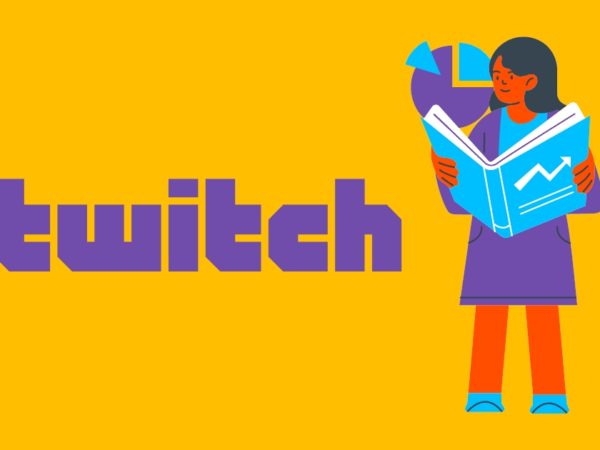Geekflare is supported by our audience. We may earn affiliate commissions from buying links on this site.
Ad servers are transforming the online advertising ecosystem by improving the complete media selling and buying process.
They automate and accelerate the complete process and provide a single platform to run and manage your ads with ease and monitor ad performance to optimize the strategies.
Publishers and advertisers can both leverage ad servers to display relevant ads while saving their time and efforts.
In this article, I’ll discuss the best ad servers for your site so you can benefit from these advanced AdTech technologies.
An ad server refers to a web server storing advertising content for online marketing and delivering the content to several digital platforms like websites, mobile and web applications, and social media sites.
Ad servers are modern advertisement technology (AdTech) that advertisers, publishers, ad networks, and ad agencies use to run and manage digital ad campaigns.

Ad servers are used to make quick decisions about the types of ads to show on a site and serve them to the audience. They collect and report data like clicks, impressions, etc., for advertisers and publishers to gain valuable insights and monitor ad performance.
Furthermore, the companies offering ad serving platforms provide software to ad agencies and publishers to help them display relevant ads to their visitors, count them, and choose the ads carefully that will translate into more money.
Types of Ad Servers: First Party Ad Server vs. Third Party Ad Server
Ad servers are mainly of two types – first-party ad servers and third-party ad servers. They have similar technologies but different purposes for publishers and advertisers.
First Party Ad Servers
First Party ad servers are also called publisher’s ad servers. Their main aim is to host and serve the ads to the users. These help publishers manage ads slots on their sites and display ads sold already to advertisers through direct campaigns. First-party ad servers can generate tags, place them, and manage ad inventory.
Advertisers send creative ads to publishers to showcase the ads. First Party ad servers decide what ads to show on a site based on different parameters like impressions, CTR, target audience, etc., providing an end-to-end ad solution for publishers.
Third-Party Ad Servers

Third-Party ad servers are also called advertisers’ ad servers. Their main aim is to create and deliver quality ads for users. These enable advertisers to track their digital campaigns, aggregate data, and verify metrics, such as clicks, impressions (comments and likes), etc.
Third-Party ad servers also help in creative optimization, such as running A/B testing, modifying ad elements, analyzing results, targeting ads, managing campaigns, and more. This allows advertisers to deliver quality ads and experiences to the target audience.
How Do Ad Servers Work?
Initially, in the digital advertising space, ad campaigns or media selling and buying were only manual and direct between the publishers and advertisers. It consumed a lot of time and involved plenty of email exchanges before a deal could happen.
Thus, publishers and advertisers both felt the need to have a system that could accelerate this process and provide ease at the same time. In addition, they desired a single, straightforward platform to run and manage their ad campaigns and monitor their performance.
The solution to this problem is using ad servers that can help both publishers and advertisers deliver targeted ads faster and easier.
First Party ad servers and third-party ad servers work a bit differently. Here’s how.
How Do First Party Ad Servers Work?
Suppose you are a user visiting a website.
- Your web browser will request the server of the publisher’s website or first-party server to display the web page content.
- The server will return the content in HTML format and start rendering the content.
- Next, the publisher’s ad server will receive a request through the already implemented ad placing code for filling up the ad slot available on the site.
- The ad server will pick the ad campaign relevant to the target audience.
- This selected ad campaign will be sent back to the site in JavaScript format, which is served to the users.
How Do Third-Party Ad Servers Work?
- When a visitor opens a site, their web browser requests the web server of the publisher’s site for content.
- After receiving the request, the server will send the HTML content and starts rendering the requested page content.
- Next, the publisher’s ad server will receive a request through already implemented code for ad placement to fill up the ad slot available on the site.
- The ad server will choose a relevant ad campaign for the users.
- From here, it will send back the selected ad campaign as an ad markup or third-part ad tag. This ad markup will contain a URL that points to the ad server of the advertisers.
- The markup will now request the ad server of the advertisers to retrieve the ad code.
- The advertisers’ ad server or third-party ad server will then send the chosen ad’s code to the publisher’s website, where the ad will be displayed to the users.
At last, ads served via an ad server will collect data on user interaction like impressions, clicks, engagement rate, dwell time, completion rate, and more. The server will also store this data to help advertisers and publishers analyze and enhance their campaign’s quality.
What Is the Difference Between Ad Servers and Ad Exchanges?
Ad networks or exchanges are a type of programmatic advertising where publishers and advertisers sell and buy ads without direct contact.
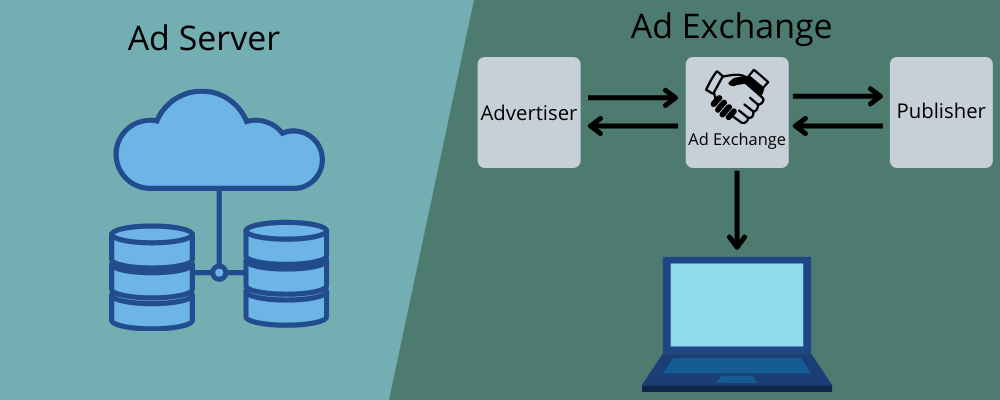
A publisher is required to install a certain code on their application or website to make a call to an ad network that sends ads to display. This way, the site’s publisher will be paid for displaying the ads.
The difference between an ad server and an ad exchange is that the former manages the entire ad system – direct, indirect (programmatic), and internal promotions, whereas the latter involves indirect contact.
Hosted vs. Self Hosted Ad Servers
Hosted ad servers require no installation from your side. The service provider will install all the updates for you so you can start using the service right away.
Hosted ad server platform will also give you better reliability and speed along with quality support to address your concerns. But it will cost you some bucks.
On the other hand, self-hosted ad servers require you to do it all by yourself. And if you want to install updates, you need technical knowledge, which not everyone has. Also, if you come across any technical issue or difficulty, you will have to fix it yourself.
This is where it gets trickier, and people prefer hosted services even if they have to invest more.
Key Features and Advantages of Ad Servers
Here are some of the features and advantages of using ad servers.
Targeting: First-party ad servers help publishers decide which category of ads to display on their sites that can cater well to their target audience.
Ad delivery: The ad servers aim at delivering suitable ads that can benefit their visitors the most so they continue visiting their sites.
Campaign management: You can manage all your digital marketing campaigns well using the first-party ad servers. It will help you categorize ads, display them to the target audience, and monitor campaign success.

Tracking and reporting: You can track your campaign metrics, such as impressions (likes and comments), clicks, conversions, etc. The ad server will also help you document the metrics via its reporting feature.
Advanced analytics: Using the well-documented reports will help you perform a thorough analysis of your digital marketing campaigns. It will provide useful insights into your strong and weak points so that you can optimize your strategies.
Automation: You can automate the process of displaying ads on your website based on parameters using ad server platforms. It will help you improve monetization by optimizing ad placement.
Compliance: Reports will help you during audits and improve compliance with applicable rules in your region or country.
User management: You can manage all your users well inside the ad server platform. You can also easily create logins, schedule reports, and more.
Multiple server locations: You all get different servers in different geographical areas to help serve ad content to your visitors and customers across the globe.
Advanced capping: This helps advertisers easily set ad frequencies, cap actions, clicks, and limit event frequency in a given timeframe.
Media elements: Leveraging rich media elements enables advertisers to assess the quality of web traffic and ad performance through algorithms and analytics.
Ad optimization tools: Advertisers will get ad optimization tools, such as banners and other creatives so that you can deliver the best ads to your audience. You can also perform ad optimization in real-time to make a better impact.
Cross-platform campaigns: Advertisers can efficiently run cross-platform campaigns to target users no matter what platform or device they use. They can view ads that look fabulous across devices, screen sizes, and platforms.
So, let’s look at some of the best ad server platforms for your site.
Google for Publishers
Whether you are a blogger, developer, designer, writer, or any creative professional, Google for Publishers can help you earn good money from your craft. It will help you find the right audience and boost your business.
Get the tools you need from Google and spend time doing the creative things you love. AdSense provides a FREE and simple way for small publishers to turn their passion into profit. Place the targeted ads next to the content and earn money when someone clicks or sees your ad.
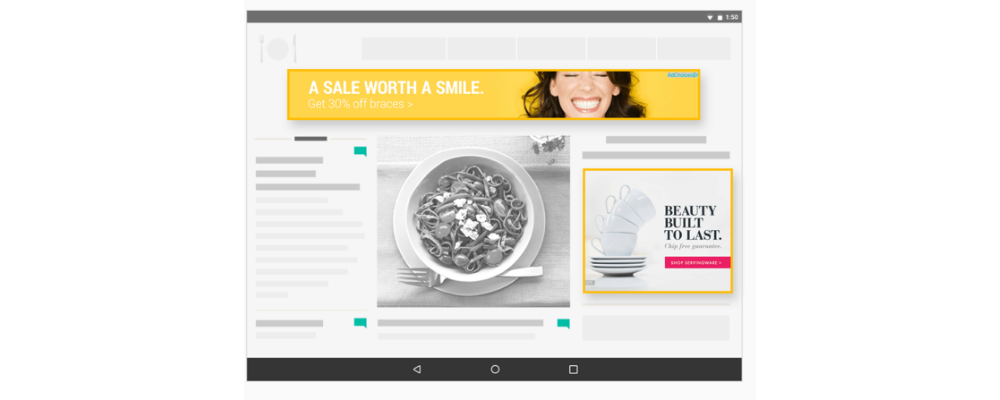
Google can resize the ad units automatically according to the device size, increasing the chances of earning more. You need to add a single piece of code to the website, and Google will do the rest according to the site layout. It will show only the highest-paid ads that can boost revenue.
All the ads are screened to ensure you will get relevant and high-quality ads on your site. You can even block the ads you don’t like and choose the best suitable types that fit your needs. This will help you grow your publishers’ sell, deliver, measure, and schedule all the digital ad inventory.
Furthermore, maximize the value of ad impressions with DoubleClick for Publishers (DFP). You will get a wide range of ad formats, including banners, native, video, and interstitials, to earn money without affecting the user experience. You will also have more competent tech, actionable insights, and automated tools.
Kevel
Build a custom ad platform and high revenue with Kevel‘s API and get a core infrastructure for ad serving, reporting, and targeting.
Get sponsored listings, native ads, retail media, digital out-of-home ads, on-site content, and email ad serving. You can also create self-service advertising portals, offer geo radius targeting, employ price auctions, and target with first-party data.
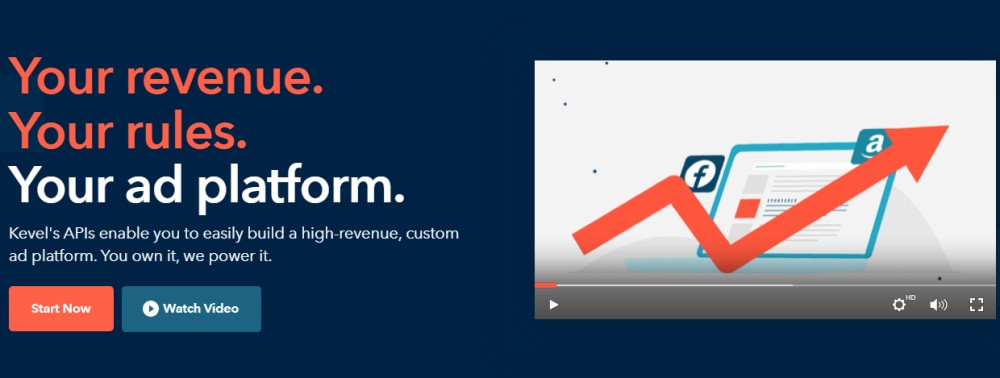
Add new features easily to your self-made solution and automate your manual processes to save time. You can also launch the MVP without hiring engineers and change the path of ad blockers using the ad server APIs.
Never compromise on security or user experience while driving ad revenue; Kevel offers fast response times, i.e., an average of 28 ms, front end, no JS tags or cookies, and a SaaS-based pricing model.
OpenX
OpenX can drive revenue by helping you close more deals with the most prominent marketers across the globe. It’s for publishers where you can connect with various global businesses and bring more growth opportunities.
The platform can help you with identity-based activation partners, custom SPO arrangements, and SSP status. It also works with various buyers to build package deals that focus on specific audiences, thereby driving more results to buyers and more revenue to publishers.
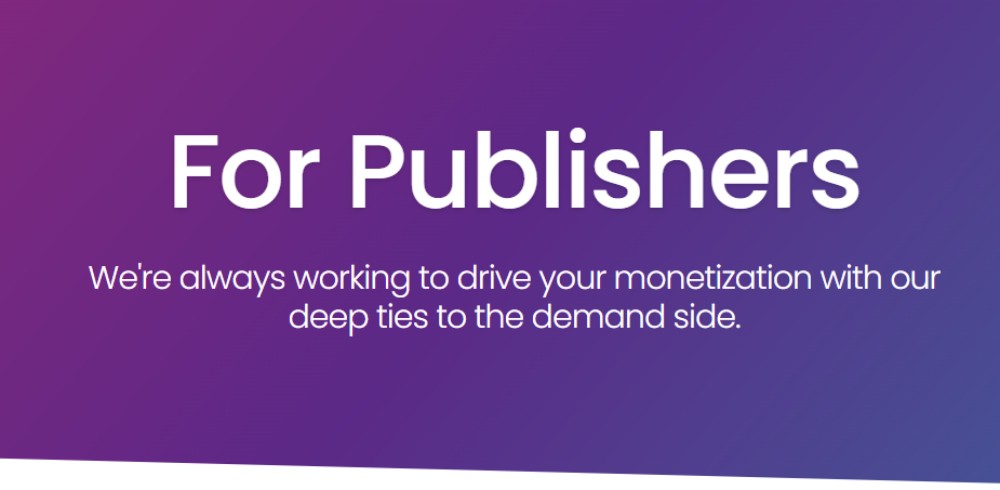
You can use the suite of products to leverage its identity graph and understand more about your target audience. Create a resolved and unified view of the users by matching the site visitors’ data to third-party identifiers.
OpenX helps you create your own preferred audiences easily and offers more effective and efficient services. It focuses on quality, scale, partnerships, and high-touch service. It also offers more than 130,000 active publisher domains, CTV apps, and mobile apps along with over 100,000 advertisers, 200B ad requests every day, and 1M classifieds every day.
Broadstreet
Get an excellent ad manager for your digital and direct ad sales with Broadstreet. Every media company, niche website, and local publisher can engage in direct ad sales from the first meeting to user retention.
Broadstreet offers a spec ad library, secure ad serving, fast ad serving, automated reporting, newsletter advertising, high-performing ads, and sponsored content analytics. Publishers love to work with Broadstreet as it stands with you side-by-side while offering quality support for platform setup, knowledgeable tech, quick process, digital strategy, and sales advice.
Furthermore, Broadstreet offers an industry-leading solution to publishers, and its plug-and-play formats only take some minutes to build and send as specs to potential clients. You can also increase your margin with decreased design costs and increased click-through rates.
Broadstreet makes it effortless to run and automate reporting and enhance retention rates. You will get options for formats, support, and features to impress your audiences, along with the confidence to deliver a great campaign.
SpringServe
Control your video advertising with the independent ad serving platform – SpringServe, which is built for video businesses and OTT.
This ad serving ecosystem is great for various businesses, including trade desks, DSPs, In-App developers, SSPs, Syndicators, Publishers, and more. You can buy and sell ads via open and proprietary marketplaces.
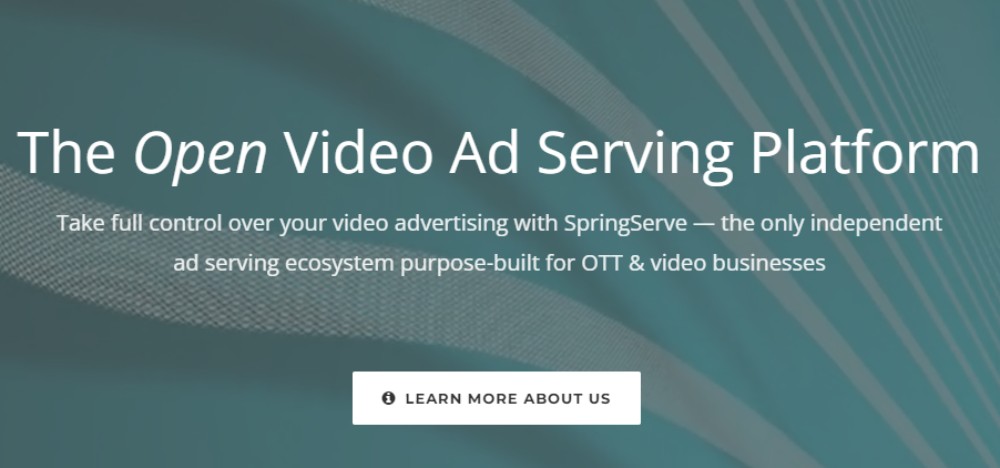
Get next-level features for CTV and OTT environments, along with A/B testing and precision routing for your ad inventory. In addition, manage and control your video ads easily and gain actionable, valuable insights at the right time to help ad managers grow more.
SpringServe ensures a safe and clean ecosystem for marketers. With its openness, responsiveness, and independence, it improves your digital video ecosystem experience. You will also get brand safety, transparency, A/B testing, inventory routing, Pod and VMAP management, direct connect, actionable analytics, and more.
AdButler
AdButler is an Advertisement Technology Infrastructure for your online content. Businesses like startups and large companies use AdButler’s APIs and software to power digital advertising operations.
Find the full-stack ad serving solutions, dedicated engineers, and human support with the AdButler platform. Though it is a display ad server, you will also get video, email, self-serve marketplaces, digital out of home, mobile, custom development, and API that helps save time, reduce cost, and maximize revenue.
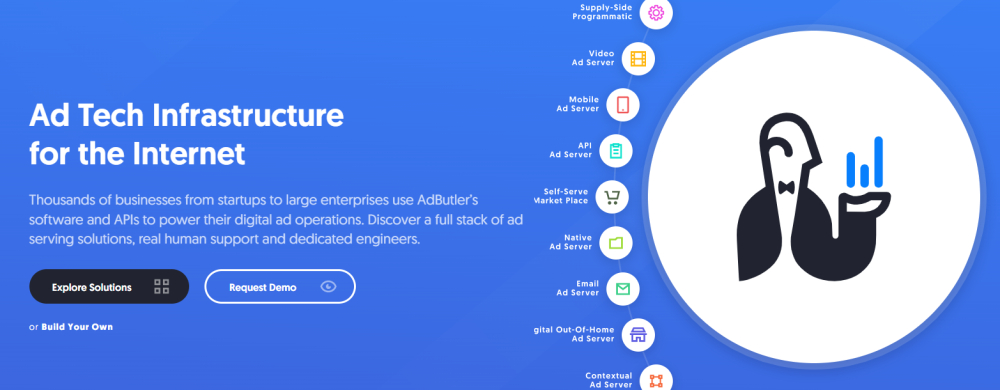
Explore all the necessary solutions in one platform to get everything you need to serve, track, and manage ads on any device. AdButler’s products offer ad serving for applications, retailers, connected TV, email newsletter, digital out of the home, websites, and more.
Furthermore, AdButler is hosted on a worldwide cloud especially built for speed, reliability, and scale. It allows you to boost your business by providing a leading edge of innovation and support from specialists and managers.
AdButler offers a FREE trial to help you explore more.
Revive Adserver
Get the world’s popular, open-source, and FREE ad serving platform with Revive Adserver. It enables ad networks, advertisers, and publishers to serve ads on websites, video players, and apps and collect statistics like clicks, conversions, and impressions.
Manage campaigns for various advertisers from different ad networks through an easy-to-use interface. You can define delivery rules for ads and campaigns, including URL targeting, frequency capping, and geo-targeting.
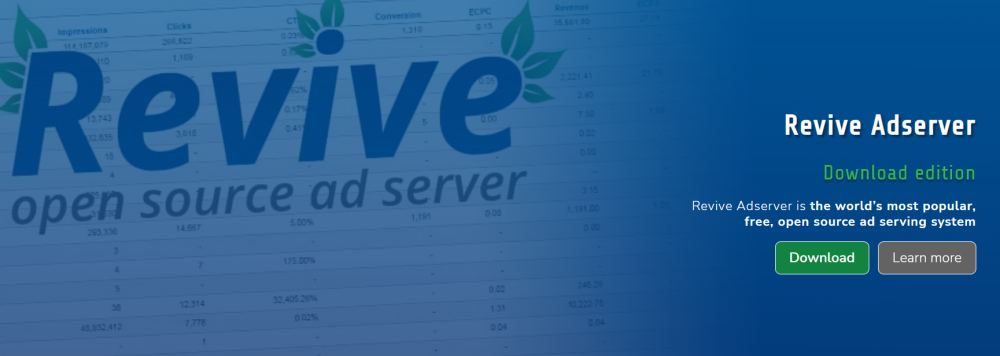
Track performance of each campaign, including revenue, conversion detail, eCPM, conversion rates, and CTR. You can create any number of campaigns you want and input or upload the banners of every campaign.
Define your websites and set up a particular zone for the ads to appear. Link every campaign to the zones and get a unique code for each zone to paste into the sites.
Revive Adserver selects the most appropriate banner according to your demand and counts every request from the application or browser. When a visitor clicks a banner, it is counted, and when they sign-up, it’s counted as a conversion.
Epom
If you want a customized white-label ad server, build a branded ad serving solution with Epom. Instead of creating everything from scratch, it can help you customize each layout detail and grow with its advanced ad serving features.
From branded email alerts or notifications to elements of placement code or user interface, Epom makes everything seamless. It also cuts down your R&D costs by offering a white label solution.
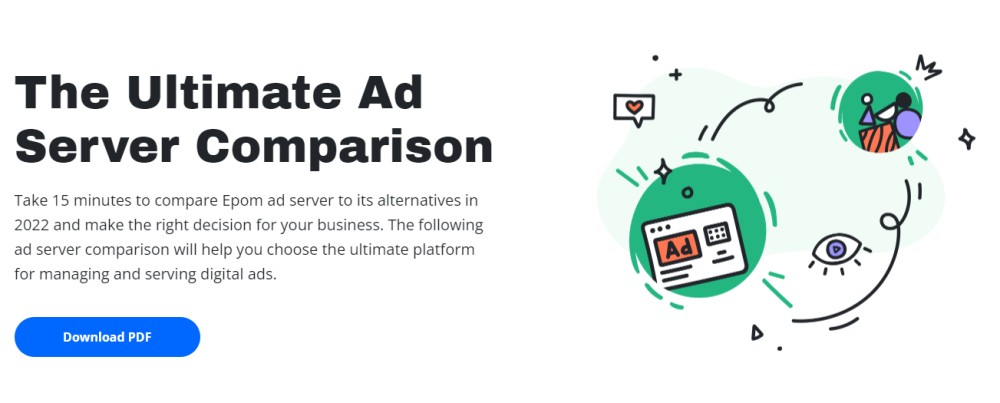
Make your brand stand out by focusing on promotion and letting Epom do all the technical and maintenance work. You can easily tailor your requirements to meet customers’ demands and add new features and functionalities to the existing ad serving platform.
Integrate your brand identity into each element of the ad serving platform, such as setup an ad serving domain, adding the company’s logo, etc., to create a better user experience.
Epom offers a flawless and stable platform with a stunning performance. Their team will fix every technical issue you face while using the platform. You can also scale your business faster with Epom’s white label solution.
iBILLBOARD
iBILLBOARD solves all the needs of publishers, from ad sales to campaign management. It knows how many tasks you have to take care of and offers reporting tools, advertising formats, and solutions to manage your inventory.
You can manage both automated and direct campaigns easily in a single interface. Get complete inventory reporting, invoicing data, and monitoring the goals.
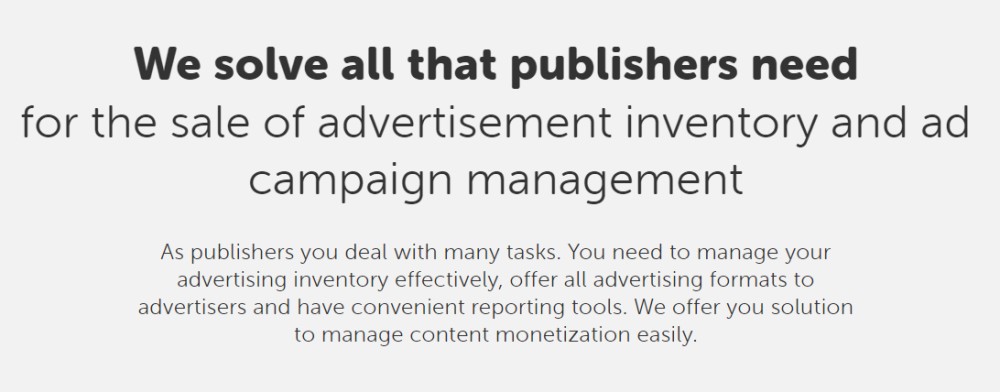
Display ads on mobile, video, and desktop without any errors. You can use a video ad server for video advertisement that instantly communicates with the integrated video player. Plus, manage your inventory efficiently and give it to advertisers through a programmatic channel.
Services of SSO and iBILLBOARD ad server work together or independently in a single interface. iBILLBOARD also supports your growth with a completely automated platform.
Conclusion
Ad servers are great tools to manage all types of ads and deliver them to the target audience. And if you want to experience the best service, you can choose a hosted ad server for your website to display relevant ads and optimize your campaigns.
You may now look at some of the best ad networks for bloggers.


